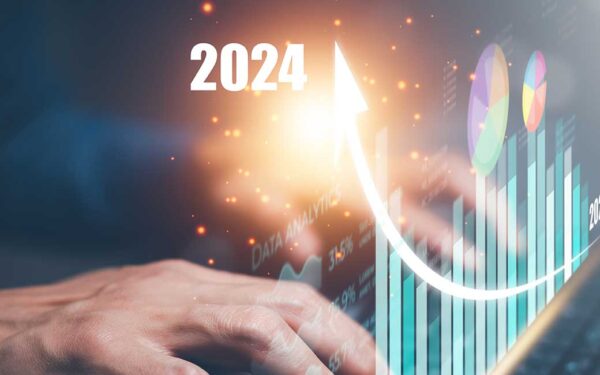Research and Development (R&D) Tax Credit Applicability and Benefit
The federal Research & Development (R&D) Tax Credit – originally introduced as a two-year incentive program under the Economic Recovery Tax Act of 1981 (ERTA) – has benefited thousands of companies from diverse industries over the past 40 years.
While many U.S. businesses receive billions in tax saving through the R&D tax credit annually, the credit is often underutilized, particularly by small and medium-size companies, due to misconceptions such as:
- The R&D tax credit would not benefit the taxpayer because the company is not profitable.
- The R&D tax credit is only for big companies.
- The R&D tax credit is not important since the taxpayer already gets a deduction.
These misconceptions are preventing many eligible businesses from benefiting from a valuable and readily available incentive designed to promote growth and innovation.
The R&D credit may be carried forward 20 years and back one year. In addition, some start-up companies may be eligible to claim a credit against payroll taxes, regardless of income tax liability. In addition, some states also offer R&D tax credits that companies may be missing.
Big companies may claim larger credits due to the scope of their activities, but the federal program is open to any size entity. The credit is based on qualified activities, and not entity size. The credit, which is available and must be claimed annually, is in addition to a deduction for R&D expenses and represents a dollar-for-dollar reduction in income tax liability.
Eligible Industries
Industries where R&D-qualified expenses often occur include, but are not limited to:
- Manufacturing & Distribution
- Software & Technology
- Construction
- Food & Beverage
- Consumer Products
- Cannabis
- Healthcare
Calculation
The R&D credit is calculated by determining the amount of qualified research expenses (QREs) for the company’s current and prior three years. QREs consist of wages, supplies used in the R&D development, and 65% of third party contract research.
In order to meet the definition of qualifying research expenses, research activities are required to be performed in the United States and need to satisfy the IRS “Four-Part Test”:
- The work is being performed to develop a new or improved business component (product, process, technique, formula, invention, or computer software component).
- The activities are performed to discover information that is technological in nature. The activities involve physical, biological, engineering, or computer sciences.
- The research is performed to eliminate technical uncertainty, determine if a desired result could be achieved, how to achieve it, or determine the specific design of a product.
- The activities will include a process of experimentation involving identification of the technical uncertainties, alternatives to consider in eliminating the uncertainties, and a process for evaluating alternatives.
The R&D tax credit can provide significant benefits to taxpayers with qualifying activities. Recent changes to the Protecting Americans from Tax Hikes (PATH) Act of 2015, together with the 2017 Tax Cuts and Jobs Act (TCJA), have made the R&D credit more lucrative by providing taxpayers potentially larger credits for tax years ending after December 31, 2017.
PATH Act
A. Payroll Tax Relief
The PATH Act allows the R&D income tax credit to be applied against the employer’s OASDI (Social Security) portion of payroll taxes for “qualified small businesses.” A qualified small business is defined as one with less than $5 million in gross receipts for the tax year, and no gross receipts for any tax year before the 5- year period ending with the tax year.
The payroll credit is limited to $250,000 per year for up to five years, and any unused portion can be carried forward to future years. The tax credit may also be claimed if the business uses a certified Professional Employer Organization (PEO). This provision allows qualified small businesses the ability to utilize the R&D credit against payroll taxes, where they might not have had the opportunity to utilize the credit previously, due to the absence of taxable income.
B. Alternative Minimum Tax Relief
The PATH Act also permits the R&D credit to offset AMT (Alternative Minimum Tax) for taxpayers with $50 million or less in average annual gross receipts, based on the three preceding tax years.
TJCA
A. Increased Credit Value
The TCJA effectively increased all R&D benefits after 2017 by 21 percent, due to an increase in the reduced credit adjustment from 65 percent to 79 percent.
B. Alternative Minimum Tax Impact
The TCJA eliminated the alternative minimum tax (AMT) for corporate taxpayers. This amendment removed a hurdle that previously prevented some corporate taxpayers from utilizing tax credits.
However, all taxpayers (corporate and individual) are subject to a minimum tax requirement specifying that an R&D credit cannot exceed the excess of the taxpayer’s net income tax over 25 percent of the taxpayer’s net regular tax liability above $25,000.
C. R&D Expense Capitalization
Current R&D accounting methods will remain the same for tax years beginning before January 1, 2022. However, for tax years beginning after December 31, 2021, the TCJA eliminates the option to deduct R&D expenditures currently. The new tax treatment will require taxpayers to capitalize and amortize R&D expenses over five tax years.
The TCJA also changed the formal language from “research or experimental expenditures” to “specified research or experimental expenditures,” and added a special rule stating that any amount paid or incurred in connection with the development of software is to be treated as a “specified research or experimental expenditure” and may restrict a company’s ability to deduct software development expenditures post-December 31, 2021.
Safe Harbor Planning Opportunity
On September 25, 2017, the Internal Revenue Service (IRS) Large Business & International (LB&I) division issued a directive providing a “safe harbor” planning opportunity for determining QREs eligible for the research credit. The safe harbor recognizes that taxpayer identification within the guidance provided will be considered qualifying and eligible for R&D credit computation purposes.
Internal Revenue Proposed Process Changes
On October 15, 2021, the IRS issued a Chief Counsel Memorandum (CCM 20214101F) to discuss new guidelines clarifying procedural instructions for eligible taxpayers to claim the R&D tax credit, while reducing the number of disputes over such claims.
In addition to the federal R&D tax credit, many states have their own R&D tax credit programs. Effectively leveraging these credits to increase cash flow is beneficial to entities of all sizes.
Contact your Marcum tax professional for assistance in determining eligibility and preparing your application.


















